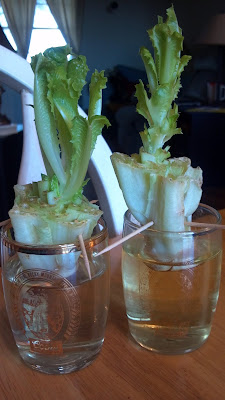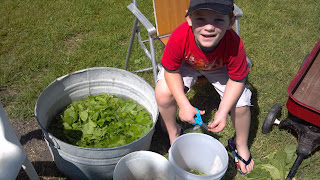The U.S. Small Business Administration isn't usually a site you'd use for personal evolution, but its resources can help you walk through the process of writing a business plan for yourself, your home, and your family. While all three plans are interconnected, start with a plan for yourself. In that very first company description, you'll need to assert your guiding principles. Maybe it's a quote, a Bible verse, the Ten Commandments, or song lyrics, but make it personal. For me, almost every choice I've made in the past 10+ years has come down to one central guiding question: What did God intend? It's not exactly "What would Jesus do?," because I'm not God Incarnate. I'm a simple, fallible human, far from perfect but still here for a reason. Maybe many reasons. But that central question has helped me make decisions for myself and my family, and it's an integral element to the constant prayer conversation I'm having with my Creator every day.
Find your question. Identify your strengths (gifts), weaknesses, opportunities and threats (SWOT Analysis), and then write a detailed plan that will help you live with intention. Choose your friends wisely, and surround yourself with people who add value to every single day, people who lift you up and support your efforts at self-improvement. Spend your time with people who inspire you. Slowly begin letting negative influences (competitors/threats) go, and focus on becoming better. You define what "better" means to you, and then go after it. Use your gifts (products and services) to build up yourself and those around you, address your weaknesses with detailed project management plans, complete with daily steps you can take to reach your self-improvement goals. Then, stick to the plan. Set yourself up for success, and then work at it every day and celebrate milestones as you reach them.
Naturally, having a plan will help you stay within a budget and meet your financial goals, but starting with your personal plan is important. We all need little "wins" every day to boost our confidence, and it takes lots of confidence to stick to your financial guns when friends and family are spending like it's going out of style. Maybe it's because their goals are different. Maybe they don't mind being a slave to credit card companies, and maybe financial insecurity doesn't make them stress-eat. That's what it does to me, so I'm stepping off the beaten path and making a business plan for myself and my family. It's time to get down to the business of being "weird," as Dave Ramsey says. Luckily, I've had a lifetime of practice in that department.
What is your guiding question? Do you have a plan? Share it. Be weird. You can do it.








